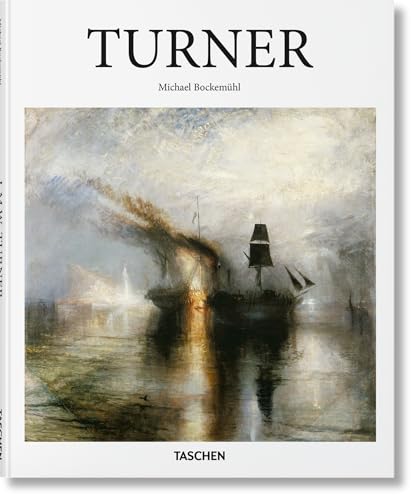Romanticism Art – The Style and Artworks That Defined the Era
The Romantic period is one of the most important periods in history as it influenced the way we think about life, love, work, family, and nature. This influence spread so deeply into the mindset of people all over the world, that till this day most of us are “Romantic” in some aspects of our sensibilities. If you are wondering in what ways you might be “Romantic” or want to find out what Romantic art literature really is, and how it still affects our society today, then this is the article for you!
What is Romanticism?
Romanticism is often wrongly understood as something being related to love or infatuation. While our ideas around love and relationships might be influenced by Romantic ideals, Romanticism as a historic movement goes far beyond the concepts of love. Romanticism also isn’t a war or a political event. In fact, there is no true Romanticism definition, but it is best understood as a new philosophy about life that emerged in a reaction against the modern civilization that rapidly developed in the 18th century.
Romanticism first emerged in the work of poets, philosophers, and artists. Therefore, it is useful to look at Romanticism in literature and visual art to understand what lies at the heart of Romanticism.
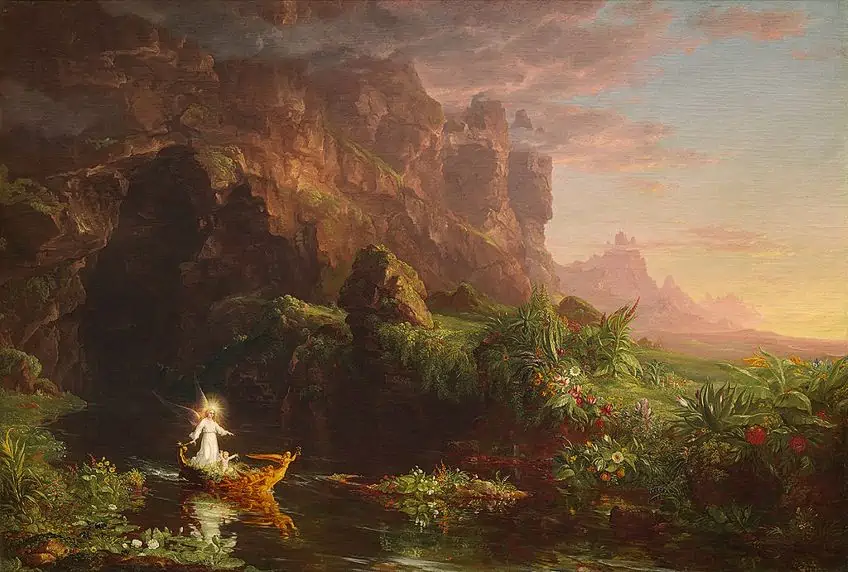
Romanticism Characteristics
Romanticism’s definition entails a set of different characteristics that makes something “Romantic”. The below sections explore some pivotal events in history that helped shape the ideals of Romanticism. Many of these events involved the effect of Romanticism literature on the way that society viewed the developing world. Each of these events tells a story that explains the different Romanticism characteristics.

Moments in History That Shaped Romanticism
Romanticism can be approximately placed between the years 1800 and 1860. The Romantic movement can be seen as a response to the rapid changes that transpired in western societies due to the Industrial Revolution.
The Industrial Revolution brought a new market economy based on machinery and technology, and it spread from England to France, then to the rest of Europe and America. The result was constantly increasing industrialization, urbanization, and consumerism. Villages became busy cities and people moved from farm homes to take jobs with grueling hours in factories.
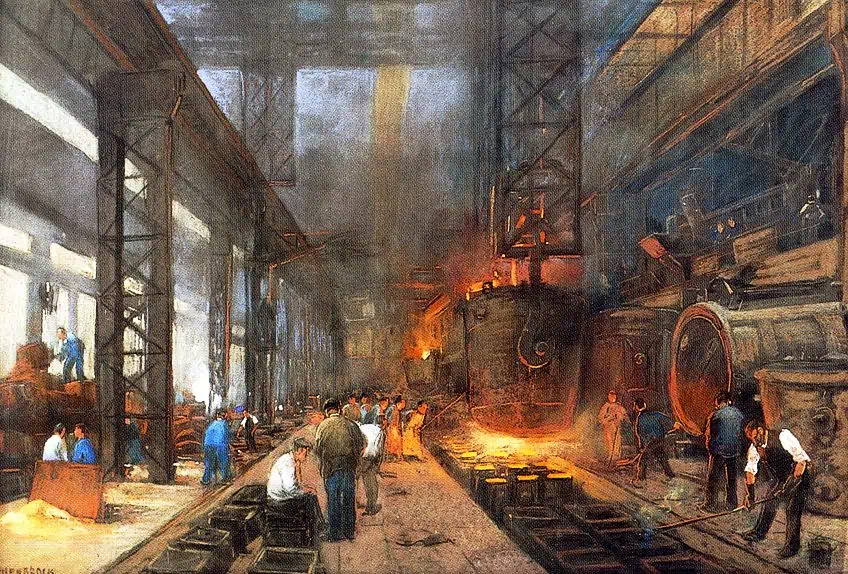
Enlightenment ideals such as rational thought, science, and empirical evidence, along with society’s new drive for efficiency and production, took precedence over everything else. Cities became crowded and dirty, and many people suffered in poverty.
Romanticism is brought on by a nostalgia for the time before the Industrial Revolutions and offered societal ideals that were fought against the ideals of the Enlightenment era.
Jean-Jacques Rousseau’s Book on the Raising of Children
In 1762, the Swiss philosopher, Jean-Jacques Rousseau, published a book titled Emile or On Education. The book was about how to raise children and it praised the sweetness, innocence, and spontaneity of children while condemning the oppressive world of adults.
Rousseau’s book is a response to the world around him, which has become increasingly rational, bureaucratic, sensible, and scientific.
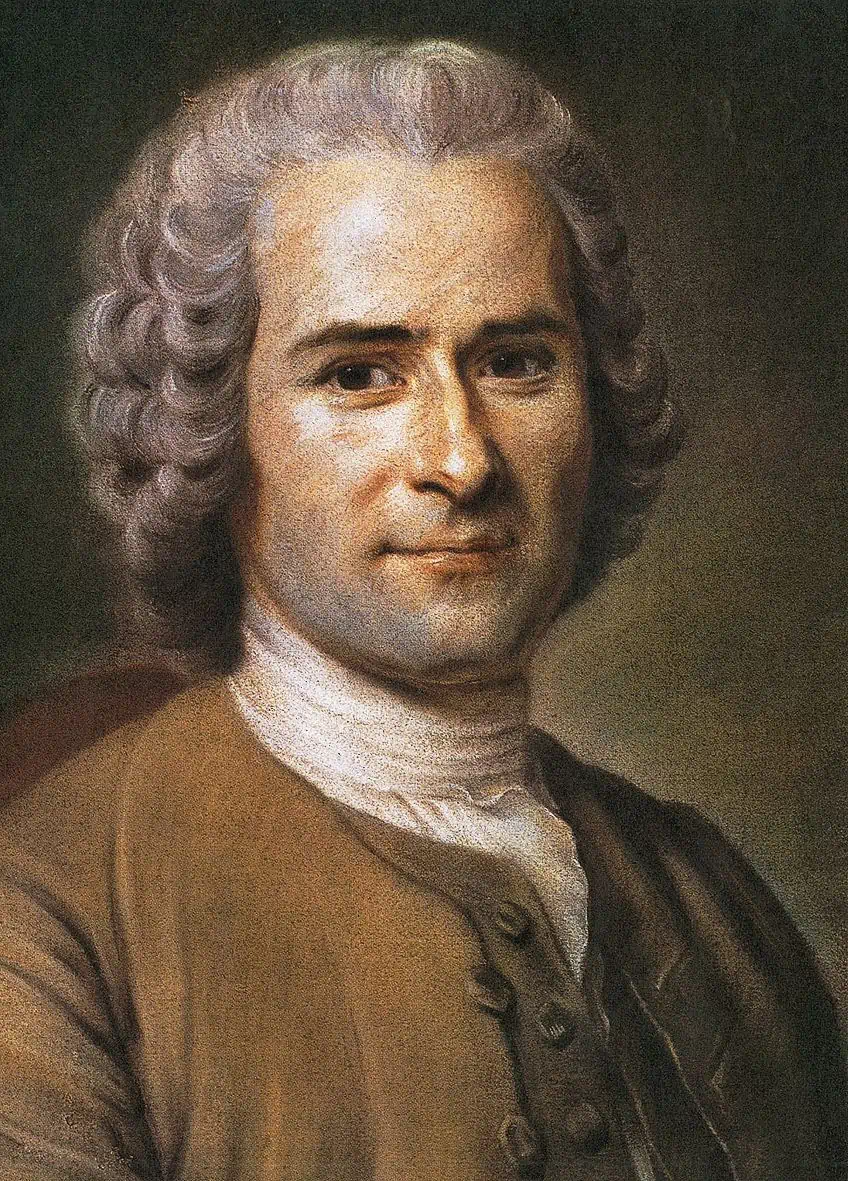
Throughout western history, self-control and discipline have been highly admired traits in children, believed to foster reason and brilliance in their adulthood. Rousseau’s deliberate emphasis on the free nature of the child, praising it as the seed of creativity and brilliance, is one of the first examples of Romanticism literature.
This would go on to have a massive effect on the development of the Romantic Period.
The Death of Thomas Chatterton
In the year 1770, in London, a handsome 17-year-old poet called Thomas Chatterton committed suicide. Chatterton felt like life was not worth living because no one saw the value of his poetry. None of his attempts to get his work published had succeeded, and his family pressured him to become a lawyer, to follow a more reasonable and stable life.
News of the poet’s suicide spread fast, and soon the poet had a passionate following of people that wanted justice for the poet.
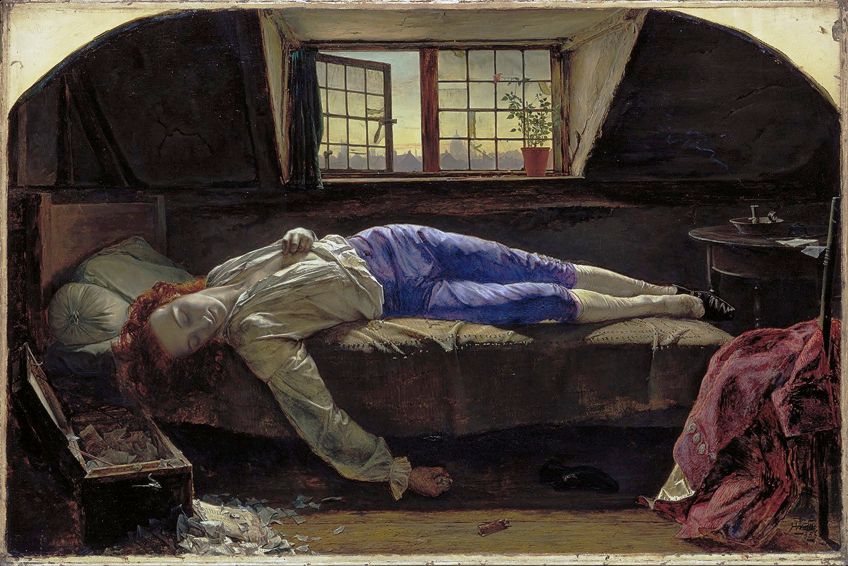
Chatterton became an icon that represented the idea of the sensitive creative that is doomed in the cruel industrial and consumerist world. This idea became very important in the Romantic period and many other “romantic heroes” will follow, including Vincent van Gogh.
We see these romantic heroes in more recent history too, with examples including icons like Kurt Cobain and Amy Winehouse.
The Sorrows of Young Werther by Goethe
In 1774, the German author, Goethe, published a romantic novel that highlights another example of Romanticism characteristics. The book, titled The Sorrows of Young Werther, tells the story of a passionate, yet impossible love affair between Werther, a young poet, and a woman called Charlotte. Young Werther has a deeply passionate and irrational love for Charlotte. This is a love that is doomed from the start as Charlotte is already married.
Werther is in a similar position to the iconic romantic hero, Chatterton. Werther, like Chatterton, also loves poetry and art above all else but is being forced into a more rational career.
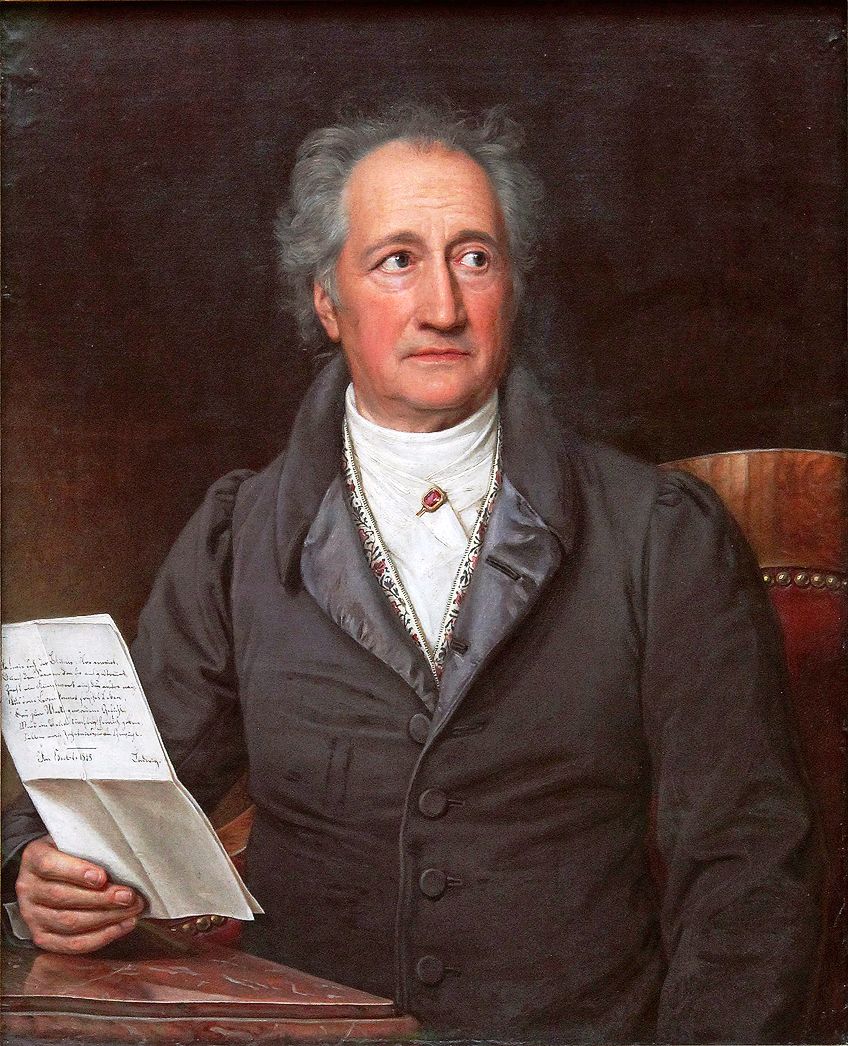
Werther, however, cannot follow such a life and keeps pursuing the love of the beautiful Charlotte. The anguish of their doomed love becomes too much for Werther to bear, and in the end, he too commits suicide. Instead of being condemned for being impulsive and irrational, Werther is praised and admired for his all-encompassing passion and love.
Goethe writes the novel in a way that the reader is left feeling deep sympathy for the tortured Werther. The book became wildly popular, selling millions of copies and getting the highest praise from Napoleon. The book deeply affected the way society saw love.
The Romantic’s idea of love and marriage is now shaped around intense passion and dramatic displays of emotion. This passion, to the Romantic, is seen as much more desirable than the rational and traditional reasoning for marrying for lineage, status, and money.
The Poetry of William Wordsworth
William Wordsworth is arguably one of the most famous people in Romanticism literature. In 1799, Wordsworth moved into a Dove cottage in the Lake District in England with his sister. In this cottage, Wordsworth would write impressive poetry for over nine years and become one of the most renowned poets in English literature.
Wordsworth’s poetry focused on the beauty and importance of nature, something that was becoming increasingly under threat with the rise of industrialization. His poetry illustrated his absolute despise for technology, industry, and machinery.

Wordsworth’s poetry was loved by many, and his supporters increasingly grew in numbers, fighting together for the protection of the natural world. The love for the natural world became one of the most important Romanticism characteristics.
Romantics spoke up for a simple life, immersed in nature, and spoke against industry and the busy city life.
Summary of Romanticism Characteristics
The examples above gave us some insight into what philosophies were important to the Romantics, and how these ideas originated. Thus, to answer the question “what is Romanticism”, we can define it as a collection of the following Romanticism characteristics. By combining and applying these characteristics, one may arrive at an idea of a Romanticism definition:
- Romanticism was a revolt against industrialization and the living conditions of people in the new cities that were so motivated by consumerism.
- Romanticism values individualism and the feelings and passions of the subjective individual.
- Romanticism values passion and love above reason and rationality.
- Romanticism takes the side of the troubled individual and the outcast.
- Romanticism is nostalgic towards the times when people lived simpler lives, in harmony with nature.
- Romanticism sees nature as all-powerful and despises handmade technologies and machinery.
Famous Romanticism Paintings
In the visual arts, a lot of Romantic painters used images of nature in their work. Landscape paintings often depicted the natural world as vast, dramatic, and unpredictable. These landscape paintings offered a counter to the seemingly ordered and controlled world of the Enlightenment era.
Through their work, the Romantic painters recalled the 18th century’s notion of the Sublime. The Romanticism paintings of the late 18th century and early 19th century often contained images of shipwrecks and the power of nature against the fragile mortality of humanity.
The idea is that man could reach the Sublime only when faced with moments of terror. Examples of works like this include Théodore Géricault’s The Raft of the Medusa (1819) and J.M.W. Turner’s many paintings about storms at sea and shipwrecks. Caspar David Friederich is another Romantic artist that painted in this style.
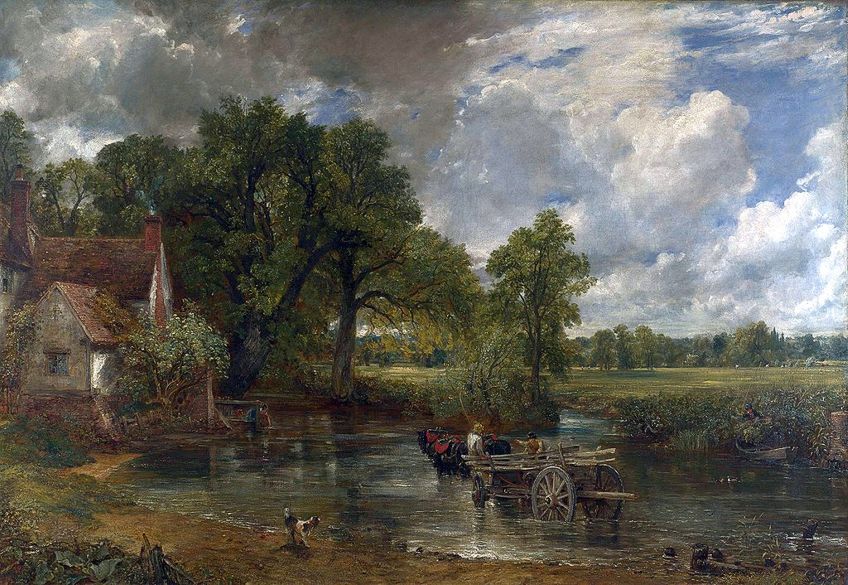
Romanticism art, however, includes more than the dramatic power of nature, storms, and shipwrecks. Many Romantic period artists also show landscapes that are peaceful and vast. An example of this is the native English countryside landscapes of John Constable.
These kinds of landscape paintings are more aligned with Wordsworth’s poetry and the nostalgia for a simpler life, immersed in nature. Constable’s natural landscapes also seemed infused with his feelings about a place.
This focus on the emotional connection to the landscape brings to the fore another Romanticism characteristic: the importance of the subjective individual.
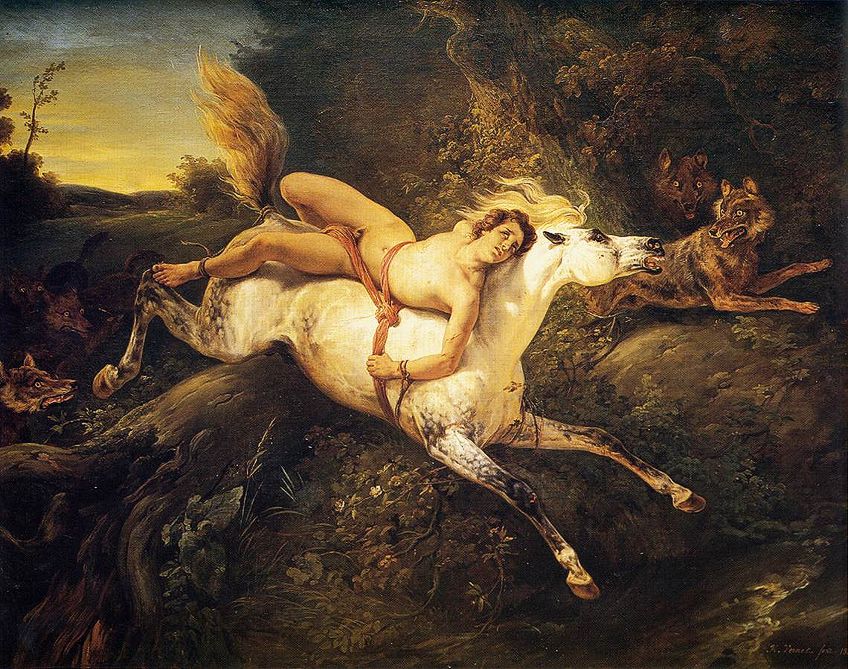
Romanticism’s focus on the subjective individual came through Romantic portraiture. Whilst many portrait paintings during the Enlightenment were stoic and a symbol of status and class, Romantic painters were more interested in illustrating the psyche of a person.
The painter Géricault, for instance, did a series of portraits of psychiatric patients.
He also painted portraits of children that were dark and ominous, communicating something about the child’s mental health and childhood conditions. Géricault gave similar emotional attention to his paintings of animals. Eugène Delacroix is another important Romantic period artist who also painted animals alongside his famously dramatic paintings of revolution. The sections below will have a closer look at some of the most loved Romanticism paintings.
The Third of May 1808 (1814) by Francisco Goya
| Artist | Francisco Goya (1746-1928) |
| Artwork Title | The Third of May |
| Date | 1814 |
| Medium | Oil on Canvas |
| Size | 268 cm x 347 cm |
| Collection | Museo Nacional del Prado |
Francisco Goya was a Spanish painter and printmaker. Many people debate whether Goya’s style was more aligned with Classism, Realism, or Romanticism. Whilst there are threads of Realism in Goya’s work, and though he received his training in a more Classicism style, Goya is regarded by most as the greatest painter of the Romantic period.
Romanticism art characteristics that are so prominent in Goya’s work include his emotive painting style and brush strokes, and his focus on the individual subjectivity and his own feelings and emotions. His painting The Third of May 1808 (1814) is a passionate work that is Romantic to its core.
This painting by Goya illustrates a historic event. In 1808 Napoleon, the then Emperor of France, conquered Spain, on the second of May the Spanish rebelled against the French occupation, and on the third of May, the rebels were rounded up and shot. The moment of shooting is captured in Goya’s moving painting. Goya made this painting in oil paint, opposed to printmaking or watercolor, and painted it on a very large painting, with both decisions signaling the importance of the painting to the artist.

The painting is made of a very strong composition, with dark zones dramatically contrasted between light zones. The focal point of the work is a victim dressed in white with his arms outstretched. The figure looks freighted and concerned. The entrapment of the victim is heightened by how the painter added him against a hill in the landscape.
His outstretched arms make his figure Christ-like and there are even deep shadows on his outstretched hand that reminds one of the marks on the hands of Jesus. The victim becomes a martyr and a hero in Goya’s painting, something that is very aligned with Romanticism’s prioritizing of the individual.
The landscape in its dark tones is dramatic, and Goya uses shading expertly to give a sense of movement and urgency into the work. Even Goya’s brushstrokes seem expressive and hastily done, something that only adds to the sense of urgency of the work. This expressive style infuses the work for energy and the artist’s gestural brushwork gives the work a sense of power.
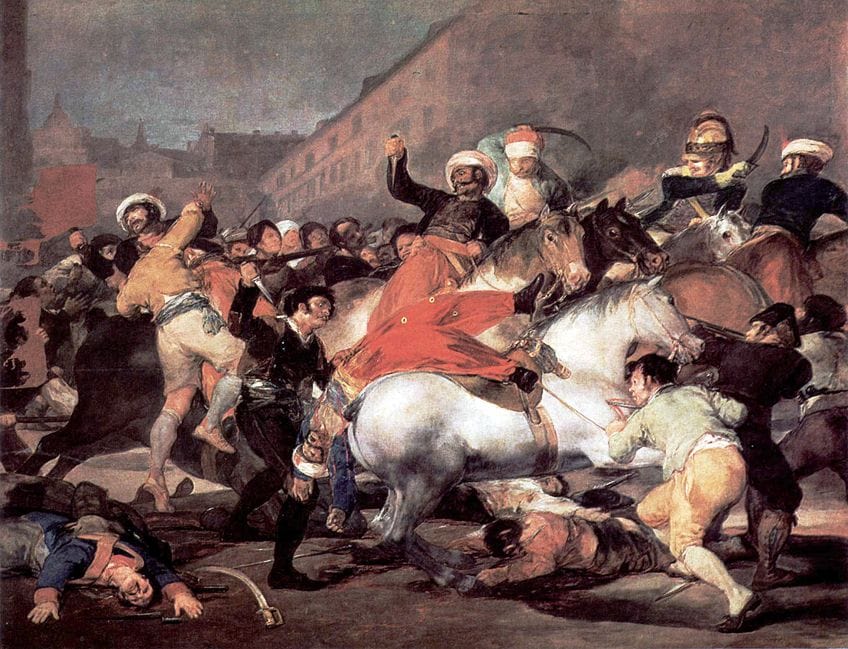
The focus of subjectivity and individualism in the work is heightened by Goya’s dramatic painting as it communicates the presence of the artist and the immediacy of the work, telling us that it was important for Goya to make his own feelings about the event visible. This presence of the artist goes against the dominant Neoclassical style that was dominant at the time and that required clean brushstrokes and a timeless presence.
Goya also uses the dramatic light in the work to communicate his feelings about good and evil. The faces of the victims are illuminated and the emotion in their expressions is clearly visible. The soldiers, however, have their backs turned against the viewers and even their backs are painted in dark tones. We cannot see any emotion in the soldiers and thus Goya renders them machine-like by removing traces of their humanity.
Goya also made another painting that illustrates the events of the day before the shooting, titled The Second of May 1808 (1814).
Wanderer Above the Sea of Fog (1818) by Caspar David Friedrich
| Artist | Caspar David Friedrich (1774-1840) |
| Artwork Title | Wanderer Above the Sea of Fog |
| Date | 1818 |
| Medium | Oil on Canvas |
| Size | 95 cm x 75 cm |
| Collection | Hamburger Kunsthalle |
Caspar David Friedrich was a German Romantic era landscape painter who often created somber and atmospheric works that were contemplative and ghostly. Friedrich’s work often depicted man as small and insignificant against the vastness and greatness of nature, a typical Romanticism characteristic.
Even as Romanticism came to an end in the mid 19th century, Friedrich stayed true to its style. Wanderer Above the Sea of Fog (1818) is an oil painting that has become one of the most representative works of Romanticism.

The painting illustrates a man with his back to the viewer that stands on a rocky precipice, contemplatively observing the ocean and rocks. In the far distance, mountains covered in fog and mist lie ghostly. The fog seems to continue indefinitely and eventually, it simply becomes part of the sky on the horizon.
The painting is said to reflect Friedrich’s own contemplative nature and Friedrich himself commented once that the artist should paint what he sees in himself, and not only what he sees in the outside world. The painting had a remarkable effect on western society and especially on mountain climbing as a hobby.
The painting created the idea that standing on mountaintops and thinking inwardly, is something to be admired, which is an idea that did not really exist before the Romantic era but that has nonetheless become a common image even in our contemporary societies today.
The Raft of the Medusa (1819) by Théodore Géricault
| Artist | Théodore Géricault (1791-1824) |
| Artwork Title | The Raft of the Medusa |
| Date | 1819 |
| Medium | Oil on Canvas |
| Size | 490 cm x 716 cm |
| Collection | Louvre Museum |
The Raft of the Medusa was painted two years after the French warship, called the Medusa, sailed to Senegal in West Africa, along with three other ships. Senegal was a French colony at the time. The Medusa, however, was run aground by an inexperienced captain and there was a shortage of lifeboats. Only upper-class passengers were allowed to board the lifeboats, and the rest of the passengers had to build a makeshift raft for 147 people.
Initially, the lifeboat was to pull the raft along with it, but out of cruelty and cowardice, the rope tying them together got cut. The raft stayed adrift for 13 days, and 20 men were murdered on the first night already. What followed was brutal stories of murder, starvation, mutiny, and even cannibalism. By the fourth day, only 67 people survived. When the raft was found 13 days later, only 15 people had survived.
Géricault’s controversial painting is based on this event. Géricault was very deliberate in his attempt to make his painting provocative, and he had visited morgues and kept severed body parts in his studio to study and paint as realistically as possible. He also painted the faces of some of the survivors on the raft, including that of Alexandre Corréad, who was an engineer on the ship and co-author of a book about his experience on the raft.

The face of Henri Savigny, a doctor on the ship and co-author of the same book, was also included in the painting. It was the accounts of Corréad and Savigny that would inspire the composition of Géricault’s painting. Another survivor, Lavillette, a carpenter on the ship, built a scale model of the raft that Géricault would use for reference in his work. Lavillette’s portrait was also included in the painting.
The painting depicts the moment that the rescue ship appears on the horizon, with the passengers of the rafter desperately attempting to signal their location. The rescue ship however didn’t see them at first and sailed past. The moment depicted in the painting is thus one of utter despair and shows the hopelessness of the passengers.
The painting is massive, nearly five by seven meters, making its dramatic content seem life-size and overpowering. The hopelessness of the passengers might be a reflection of Géricault’s own emotional state at the time of making the work, as he was forced to break off a love affair he had with his married aunt.
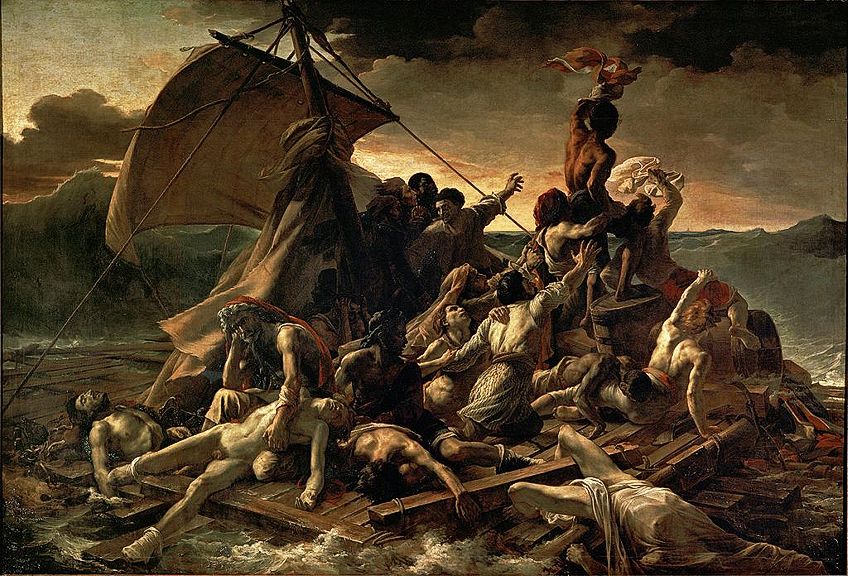
With all Géricault’s research and references, the painting, although imagined, ended up being a very true depiction of the events that transpired. Historical paintings were seen as the highest form of art in western painting at the time, always depicting a clear hero. History painting was normally patriotic and noble. Géricault’s painting went against these expectations instead made a painting that highlighted the horrors and shameful behavior of supposedly upper-class citizens, murdering each other and resorting to the ultimate taboo of cannibalism.
The work was controversial not only for its anti-royalty statement that scandalized high society but also because the main figure in the work is a black man. This work was made in the age of slavery, and to make a black man the hero in an artwork deemed “offensive” to the elite. The black man at the apex of the composition, signaling for help when others have lost hope, is Jean Charles, the only black survivor.
Despite Géricault’s clear focus on accuracy, he decided to set the scene in the middle of a storm. Storms are very characteristic of Romantic painting, and they added a lot of emotion and drama to the work. The artist also used dramatic light, utilizing the strong light and dark tones in the work to evoke movement.
Géricault’s heroes in the work are also depicted as idealized and muscular when in truth their starvation had left them starving. Géricault’s painting is thus not a mere reproduction of an event but infused with his own emotional state due to his lost love, and his attempts to heighten the emotion in the work by adding storms and idealizing heroes.
Liberty Leading the People (1830) by Eugène Delacroix
| Artist | Eugène Delacroix (1798-1863) |
| Artwork Title | Liberty Leading the People |
| Date | 1830 |
| Medium | Oil on Canvas |
| Size | 260 cm x 325 cm |
| Collection | Louvre Museum |
Eugène Delacroix is one of the most famous Romantic painters. Delacroix was born in 1798 in France, where Romanticism was already in full swing. Delacroix is most known for his dramatic use of color, and like a true Romantic, he utilizes color to evoke emotion. One of Delacroix’s most celebrated Romantic paintings is his large oil painting titled Liberty Leading the People, painted in 1830.
Delacroix in this painting is depicting a contemporary event: the revolution of July 27-29, 1830, also known as “Three Glorious Days”. The painting is painted on a very large canvas and during this time, works of this size were reserved for history paintings.
What Delacroix did here was to follow in the footsteps of Géricault who painted The Raft of Medusa a decade before. Both these artists went against the rules of the Academy of the Paris Salon and made large works that reflected on contemporary times, instead of the past.
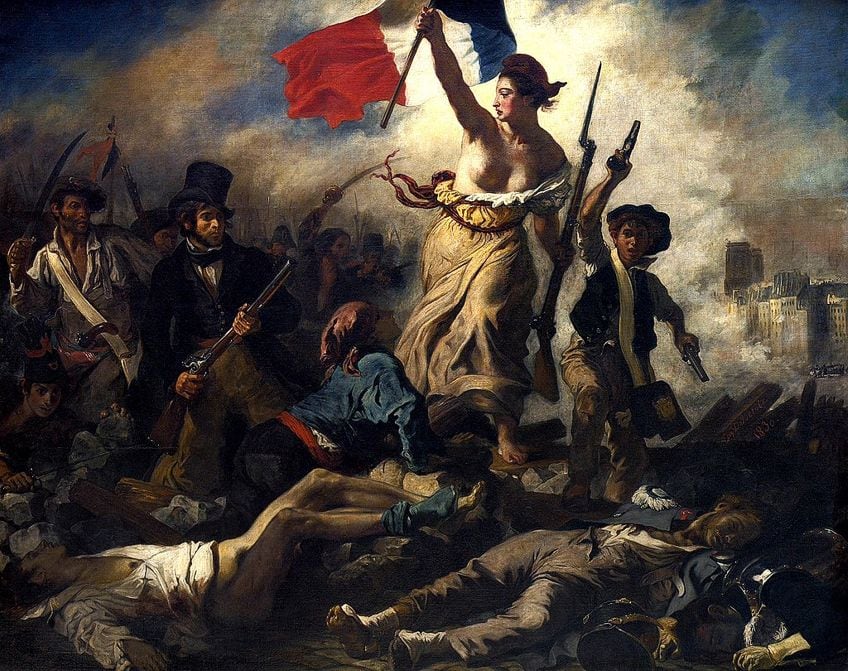
This contemporary event was the revolution that had overthrown King Charles X and transferred the throne to the more reasonable King Louis-Phillippe. The painting predicts a moment during the revolution where the outcome is not completely sure yet. The image shows fighting, smoke, and in the background, the cathedral Notre Dame. The Notre Dame was seen as a symbol of the conservative monarchy, yet Delacroix painted a flag of the revolution on the top of the cathedral.
Liberty, the woman leading the revolution, is a symbol of the ideas that led the revolutionaries to fight against the monarchy. The reason that her breasts are exposed is to link her figure to antiquity and to fertility, where reference to Greek and Roman sculptures refers to the birth of democracy. Other figures in the painting are also symbolic.
The two men in the foreground are clearly from different classes and by placing them next to each other, Delacroix is making a statement saying that the revolution is not only for the poor but for all citizens of France. Much like in Géricault’s The Raft of Medusa, the dead and wounded are closest to the viewer and lie impassively in the foreground of the painting. Delacroix’s painting is thus not only about the victory of freedom, but also about the cost of revolution.
The Fighting Téméraire, tugged to her last Berth to be broken up, 1838 (1839) by J.M.W. Turner
| Artist | J.M.W Turner (1775-1851) |
| Artwork Title | The Fighting Téméraire, tugged to her last Berth to be broken up, 1838 |
| Date | 1839 |
| Medium | Oil on Canvas |
| Size | 91 cm x 122 cm |
| Collection | The National Gallery |
J.M.W. Turner is an important Romantic period artist, born in London in 1775. Turner had a remarkable ability to capture the natural landscape and his emphasis on transient and dramatic light, along with his focus on color and atmosphere, became very influential to the impressionists. Turner’s paintings often depicted storms at sea, scenes of large waves and terrifying fire, and in contrast, scenes that depict the tranquility of the vast natural landscape.
The Fighting Téméraire is one of Turner’s most fascinating and well-known paintings. In fact, Turner himself called this painting his “darling”. The painting depicts the final voyage of the Téméraire, a beautiful classical ship that was one of the last military ships used before being replaced by mechanical ships that utilized new technology.

In the painting, the Téméraire is being towed into shore to be disassembled. The Téméraire was a ship with a long history and was painted by Turner on commission years prior. In the painting, the Téméraire is painted beautifully and majestic, but it also seems ghostly, shielded by atmosphere and smoke. The ship that is towing the Téméraire is dominating the foreground with its dark colors and the fire and smoke that is both shielding the Téméraire and polluting the atmosphere.
Turner’s Romantic sensibilities can be seen in his love for the Téméraire and his despair for the new technologies, brought on by industrialization, that is taking over in the new world. This painting is unlike Turner’s previously stormy seascape paintings and the waters in this painting are completely still. The still waters give a sense of sadness, like the moment of silence that follows someone’s death.
Adding to this sense of sadness and death is the setting sun on the right-hand side of the moon. Like with other Romanticism art, the artist’s own emotions can be experienced through his work. This work is not as aggressive and urgent as the examples of Delacroix and Géricault, but it is nonetheless an extremely emotionally loaded work. It is also possible that the work reflects Turner’s own life that is drawing to a close the older he gets. The painting never left Turner’s studio for the remainder of the last 13 years of his life and on his death, it was donated to the state.
Reading Recommendations
There are countless books published on Romantic art, Romantic artists, and the several influences of Romanticism on visual art, music, literature, and philosophy. It can be a daunting task to think of where to start when you want to know more about Romanticism art. The below three books are our recommendations of books that are interesting, enriching, thought-provoking, and simply beautiful to look through.
Turner (2015) by Michael Bockemühl
This is a remarkable book that includes a thorough biography of J.M.W. Turner, along with approximately 100 color illustrations, including explanations. The book is part of the Basic Art Series published by TASCHEN. It is a book that covers the historical influences in Turner’s work, a chronological summary of his life and work, and the cultural and aesthetic importance of his work that transformed the tradition to the modern.
Romanticism: A German Affair (2015) by Rüdiger Safranski
Romanticism: A German Affair is a book that offers a digestible overview of the Romantic period, whilst simultaneously providing the reader with a critical history of its influences and how it, in turn, influenced German culture. The author starts the book by unpacking the importance of the Sturm und Drang movement and its effects on Romanticism in Germany. Hereafter, the book considers the considerable impact that the Romantic period had on influential thinkers to follow, including Friedrich Nietzsche and Thomas Mann. The book concludes with the possible influence of Romanticism in National Socialism and the student revolt of 1968.
- Informative introduction to Romanticism in the German culture
- Essential read for anyone interested in the power of art and culture
- Accessible overview of the Romanticism era that traces its great influence
The Roots of Romanticism: Second Edition (2013) by Isaiah Berlin
Isaiah Berlin is one of the 20th century’s most influential philosophers, and in this book, he investigates the movement of Romanticism and how it shaped the future of humanity. The second edition is a beautifully illustrated edition that is refreshed and simply brilliant. The book covers his philosophy of the most influential thinkers, musicians, writers, and artists of the Romantic period.
- New edition that contains illustrations for the first time
- Incredibly thought-provoking yet accessible to beginners and professionals
- Appendix that includes some of Berlin's correspondence about certain lectures
The Romantic movement changed the course of history. In some ways, many of us have some aspect of Romanticism in our sensibilities. With the rapidly developing world that is focused on precision and technological advancement, Romanticism chose the side of the irrational, the naïve, the free, the different, the strange, and the dramatic. Romantics often idealized icons and heroes whose virtues they believed would make society a better place. This also placed a great focus on individualism and the subjective experiences of the dreamer, the musician, the artist, the writer, and all those who believed in the freedom of imagination and passion.
Frequently Asked Questions
What is Individualism in Romanticism?
Individualism is an ideology and philosophy that privileges the moral worth of the individual over that of the collective or the state. The Romantics praised individualism as a statement against the social systems and norms that imposed rules, morals, and conventions onto people.
Is Romanticism Still Relevant Today?
While Romanticism is placed within a certain period in history, namely from the late 18th century to the mid 19th century, its idealisms still impact our world today. The concepts and ideas that the Romantics introduced into the world still influence contemporary ideas about love, children, work, politics, the ways we express ourselves, and the ways we want to be treated in return. Today, we still see Romanticism in literature, visual art, and music.
Who Are the Ten Most Famous Romantic Painters?
While this question might be subjectively answered in different ways, some of the most famous Romanticism artists include the ones discussed in this article, namely Francisco Goya (Spanish, 1746-1828), J.M.W. Turner (English, 1775-1851), Caspar David Friedrich (German, 1774-1840), Eugène Delacroix (French, 1798-1868), and Théodore Géricault (French, 1791-1824). Five other similarly famous Romantic artists include William Blake (English, 1757-1827), John Constable (English, 1776-1837), Ivan Aivazovsky (Russian, 1817-1900), Francesco Hayez (Italian 1791-1882), and Thomas Cole (1801-1848).
Jordan Anthony is a Cape Town-based film photographer, curator, and arts writer. She holds a Bachelor of Art in Fine Arts from the University of the Witwatersrand, Johannesburg, where she explored themes like healing, identity, dreams, and intuitive creation in her Contemporary art practice. Jordan has collaborated with various local art institutions, including the KZNSA Gallery in Durban, the Turbine Art Fair, and the Wits Art Museum. Her photography focuses on abstract color manipulations, portraiture, candid shots, and urban landscapes. She’s intrigued by philosophy, memory, and esotericism, drawing inspiration from Surrealism, Fluxus, and ancient civilizations, as well as childhood influences and found objects. Jordan is working for artfilemagazine since 2022 and writes blog posts about art history and photography.
Learn more about Jordan Anthony and about us.
Cite this Article
Jordan, Anthony, “Romanticism Art – The Style and Artworks That Defined the Era.” artfilemagazine – Your Online Art Source. February 15, 2022. URL: https://artfilemagazine.com/romanticism-art/
Anthony, J. (2022, 15 February). Romanticism Art – The Style and Artworks That Defined the Era. artfilemagazine – Your Online Art Source. https://artfilemagazine.com/romanticism-art/
Anthony, Jordan. “Romanticism Art – The Style and Artworks That Defined the Era.” artfilemagazine – Your Online Art Source, February 15, 2022. https://artfilemagazine.com/romanticism-art/.



